You are viewing ARCHIVED content published online before January 20, 2025. Please note that this content is NOT UPDATED, and links may not work. Additionally, any previously issued diversity, equity, inclusion or gender-related guidance on this webpage should be considered rescinded. For current information, visit https://www.blm.gov/blog.
Podcast: White Mountains Safety
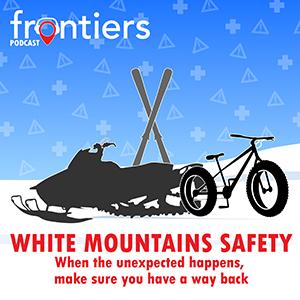
Transcript
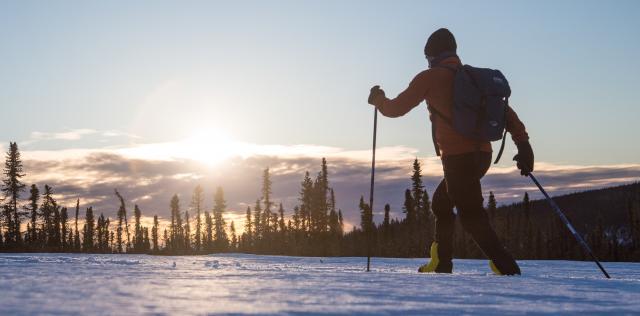
[Jim Hart]: Welcome to the BLM Alaska Frontiers podcast. I'm Jim Hart. We recently spoke with Garrett Jones, a recreation planner who works in the White Mountains National Recreation Area, and we asked about his job working in one of the most beautiful areas in the country. Of course, the White Mountains are a wonderful place to get some solitude and soak up some nature, especially the public use cabins. But the area also commands respect, especially in the wintertime when weather can turn very nasty very quickly, and help can be scarce. Garrett, thanks for coming back to talk relaxation, recreation, and safety.
[Garrett Jones]: Thanks, Jim, for having me. I really look forward to talking about all those amazing things we have to offer out in the White Mountains.
[Jim Hart]: So the BLM maintains some 250 miles of trails and 12 rec cabins in the White Mountains National Recreation Area. That's a whole lot of adventure to be had.
[Garrett Jones]: Yeah, endless amounts of opportunity for exploration on all the trails. But then also to have those 12 cabins you mentioned that are all situated, you know, whether looking over a boreal forest, limestone peaks or wild and scenic river, it's a pretty special place to be able to travel, but then also places to stay that are very unique.
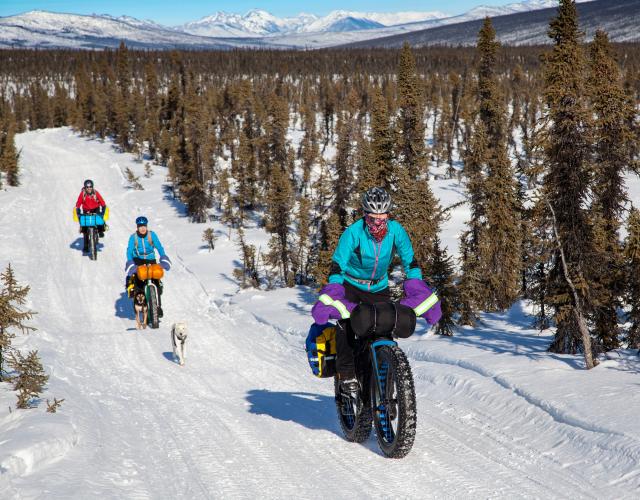
[Jim Hart]: And remind me again how you can rent a cabin.
[Garrett Jones]: It's pretty easy. Like a lot of things these days, you can do it all online and you can go to rec.gov and you search the White Mountains National Recreation Area. You view the availability grid or view the cabins, whichever one you're interested in. It tells you what is available, you push book and you pay with a credit card.
So, for $33 you can rent a cabin in the White Mountains. The one thing you need to know, though, is that there's only a 30-day period that you can rent the cabins ahead of time. So, if you have a trip coming up that's next month, you need to really start thinking about it ahead of time, especially if it's on the weekends or a holiday.
[Jim Hart]: I know the trail conditions have been fast and that means that skier or a fat biker can make it out quite a ways in a short time. But this can be a problem if somebody has a flat tire or if a chain breaks, especially in cold weather, what should a person bring with them?
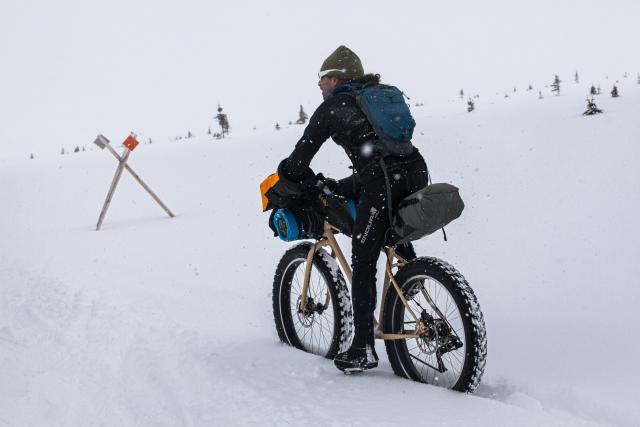
[Garrett Jones]: Trail conditions are very optimal right now and they can get very far out there. And, you know, breaking of an item on their bike is one thing, but also what if it snows six inches, three inches even, and changes your conditions and how hard you're going to have to work. But with any of these user groups, non-motorized or motorized, you're going to want to bring a lot of the same items. So, some of the items that we like people to think about are layers, especially with the active users.
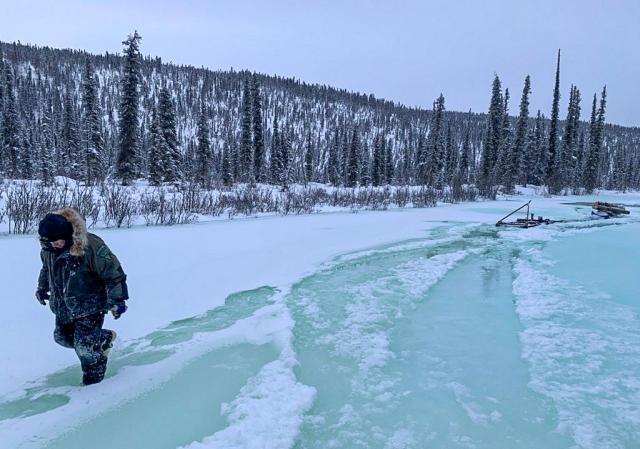
You need dry layers that you can put on if you need to stop or when you get to the cabin so you don't get cold. So, layers, a good winter parka, insulated pants, good boots, some items that people have, whether it be ski boots or they're biking boots, they might not be really great winter boots. So having those extra boots, sleeping bags that are rated to the current low temperatures, extra gloves, hand warmers, fire starter, a way to make water (a pot), folding saw to cut firewood, and also some high caloric food so you can keep your keep your energy level high. And then, of course, communication gear , if all else fails.
[Jim Hart]: What about other recreationists, like skiers or hikers? They can carry more than cyclists, what should they consider bringing?
[Garrett Jones]: Yeah, you know, with all of these groups that we're talking about, I think the big thing to always remember is that being familiar with your equipment, not going out to the White Mountains or any multi day or even day trip without experiencing how you can travel and what is too heavy or too light.
There is this fine line of too much stuff as well. If you have too much stuff, you're going to be maybe moving at a slower pace, and maybe have more opportunity to injure yourself. You are going to exert yourself more than if you have lighter equipment. So, know that fine line of what you can get away with and still be safe in any event or any situation.
[Jim Hart]: And finally, snow machines, they're fast and some are capable of pulling a few hundred pounds of gear. What should they bring with them?
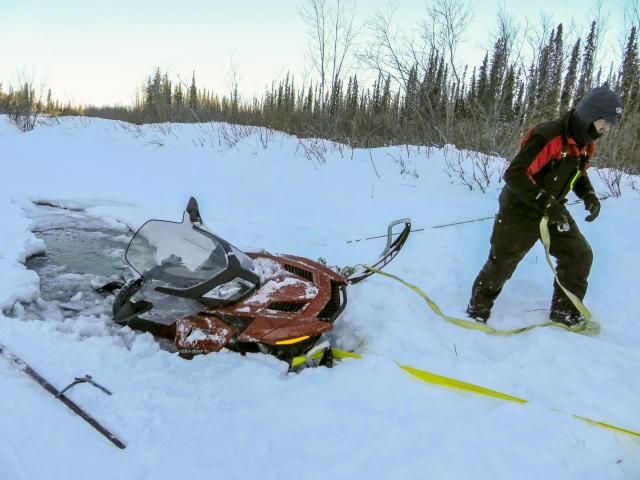
[Garrett Jones]: Snow machines are getting more capable, but they are only as capable as the rider using them. So the equipment that we like snow machines to bring, besides all those items we talked about previously, would be recovery gear. You're talking about a machine that's quite heavy. So you need to be able to have a way to get it unstuck, a come-along, an extra-long rope, and then maybe even ice screws for being able to screw into ice and pull yourself out. Then also the parts that you'd want to bring. The most common parts would be an extra belt, sparkplugs, extra fuel and oil, but then also the tools to be able to change those parts on the machine. Those are the extra items, but there’s also the go bag if you did have to walk, being able to carry those extra items like clothes, food, water, fire starter kit to the next destination.
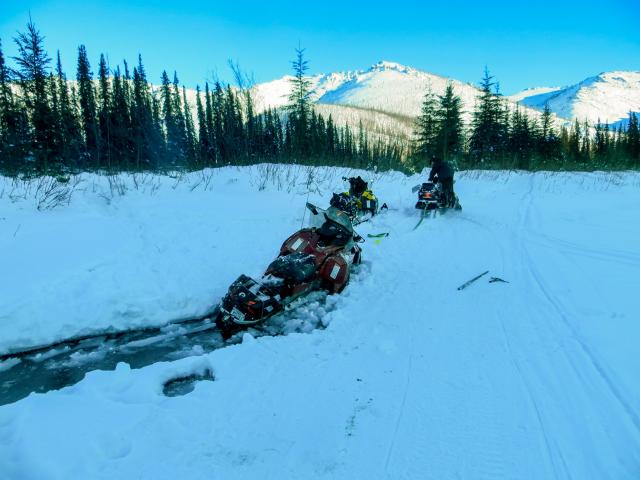
[Jim Hart]: So what kind of communications gear should somebody bring with them?
[Garrett Jones]: You know, the White Mountains is very remote. A minimum is your cell phone, which is a great one immediately for a lot of places, and it actually could work in some locations within the White Mountains. But then I also recommend a satphone or an inReach®, which is a texting device so you can communicate an emergency or that you're going to be late —things of that nature. And inReach® also as an emergency beacon, similar to a PLB (personal locator beacon).
[Jim Hart]: I've heard a trip plan is arguably one of the most important safety items people neglect. How important are they?
[Garrett Jones]: I think trip plans are extremely important, whether you're just going out for the day or whether you're going out for the week. And a trip plan consists of pretty much allowing a family member or a friend that you trust, who might actually care if you don't come back, know that you're out there and what you're doing from the time you leave your house, to the time you're leaving the trail head, to a rough time of departure of the trailhead and then your trip plan from the trailhead to where you're going to each cabin, what days and then your time that you're supposed to be due back.
[Jim Hart]: What about other details like the vehicle you're driving?
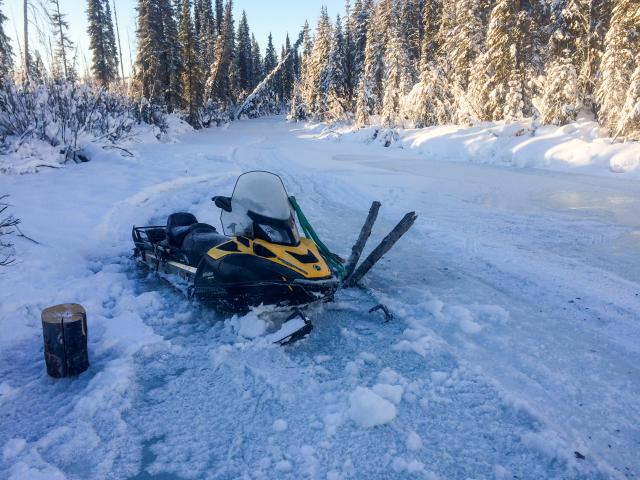
[Garrett Jones]: Yes. Having a description of all your items — the vehicle you're driving to the trailhead, how many are in your party, who they are, if there are any medical issues within your party, what color snowmachine you have, how much fuel you have, how many miles you might be going — just so they have as much detail as possible to send on to emergency service troopers if they do need to come and look for you.
[Jim Hart]: Garrett, thanks for the safety rundown. I'm sure it helped remind some folks to double check their safety kits.
[Garrett Jones]: Thanks, Jim, for having me. And definitely if anybody has any questions about the White Mountains, feel free to contact us here in Fairbanks at the Fairbanks district office. We always are here to answer any questions that concludes this podcast.
[Jim Hart]: Please make sure to check out the BLM Alaska website. There you'll find the White Mountains National Recreation Area page, where you'll find all sorts of information about the trails and cabins available. And you can download a geo-referenced PDF map of the White Mountains for use on your mobile devices, which is a great help for areas with no cell coverage. Go to the White Mountains National Recreation Area Facebook page for current trail conditions and other cool info.
The Frontiers podcast is a production of the BLM Alaska Office of Communications.

James Hart, Public Affairs Specialist
Related Stories
- BLM’s Agua Fria National Monument is a worthwhile destination on your winter bucket list
- Celebrating Winter Solstice 2025 at the Meadowood SRMA
- Popular posts: BLM's most viewed blogs of 2025
- Take a First Day Hike on Your Public Lands
- Using science to uncover mysteries of the Mesa archaeological site in Alaska
Office
222 W 7th Avenue #13
Anchorage, AK 99513
United States
